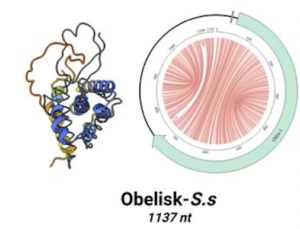As early as the mid 1980s, researchers around the world began to identify the inverse correlations between high titers of anti-bone antibodies, and bone mineral density: the higher the titers, the lower the BMD, explained Dr. Larson.
Intestinal inflammation in celiac disease is driven by the gluten fraction of wheat proteins. Deamidation or cross-linking of gluten peptides by tissue transglutaminase (tTG), a key autoantigen in celiac disease, creates potent T cell stimulatory peptides (Dieterich W, et al. Gut. 2006. 55: 478-484).
“Celiac disease is a major cause of bone mineral loss. It is an underlying cause of osteoporosis in some cases. If you have a patient with osteoporosis, why not also check for celiac? You may find a very meaningful trigger. If you remove gluten from the diet, the biomarkers and the bone loss may improve,” says Dr. Larson.
Old Ideas, New Possibilities
Autoantibodies targeting bone and joint tissue play a role not only in osteoporosis but in various forms of arthritis as well. This is actually an old concept now being validated via new immunological testing techniques. The notion that gut-derived factors could provoke rheumatic disease was first proposed by Dr. Rea Smith, a pioneering Navy surgeon, back in 1922!
Since then the link between inflammatory bowel disease and arthritis has become well established, and antigens derived from the gut have been implicated in reactive arthritis, ankylosing spondylitis, and rheumatoid arthritis.
Researchers have identified a number of components within bone and joint tissue that become immune system targets. These include Phex protein and Calreticulin. The latter is a frequent target of serum autoantibodies in various diseases. However, IgA isotypes of anti-CRT antibodies have only been detected in people with Celiac and some hepatic diseases.
Compared with non-rheumatoid controls, people with rheumatoid arthritis show consistently higher levels of IgG antibodies to a host of antigens including: rheumatoid factor (RF), Arthritis peptide, CCP, mitochondrial dehydrogenase, collagen, mycobacteria, mycoplasma, C. pneumoniae, HSP-60. They also have higher TNF alpha production.
Osteoarthritis patients show consistently higher levels of IgG antibodies to rheumatoid factor, rheumatoid factor peptide, to fibulin and Y enterocolitica (Vojdani A. Int J Immunopathol Pharmacol. 2008. 21(2): 267-278).
Raised titers of IgG and IgM anti-CRT antibodies have been seen in patients with SLE, subacute cutaneous and neonatal lupus, rheumatoid arthritis (RA), Sjögren’s syndrome (SS), complete congenital heart block, mixed connective tissue disease (MCTD), hepatocellular carcinoma, and a number of parasitic infections (Sanchez D, et al. J Autoimmunity. 2003: 383-392).
People with celiac will often show increased antibody titers against four types of collagen: collagens I, III, V, and VI. These tissue transglutaminase antibodies appear to play a central role in both perpetuating intestinal inflammation and triggering systemic symptoms outside the intestines (Dieterich W, et al. Gut. 2006. 55: 478-484).
In many celiac patients, skeletal symptoms will presage bowel symptoms by as many as 3-15 years, according to a case series published by Bourne and colleagues at St. Bartholomew’s Hospital, London (Bourne JT, et al. Annals of Rheumatic Diseases. 1985; 44: 592-598).
Squelching Disease Before it Happens
Autoimmunity is the result of a triad of factors: genetic predispositions, compromise to intestinal barrier, and exposure to triggers—especially dietary and environmental antigens, explained Dr. Larson.
The idea that food-related antigens play a role in arthritis or osteoporosis should not be oversimplified. The interconnection between the gut, the immune system, and the peripheral tissues is complex. The particulars in any given case will be highly individualized.
What this idea can do is open up new avenues for exploring the causes many common, debilitating and seemingly intractable musculoskeletal disorders.
The interval between the first traces of detectable autoantibodies in serum and the manifestations of serious diseases like rheumatoid or osteoarthritis arthritis may be as great as 10 years. This opens opportunities for early interventions during a pre-symptomatic phase, aimed at improving gut barrier function and reducing exposure to food or environmental allergens.
“Screening for predictive autoantibodies could one day become routine,” Dr. Larson suggested.
Dr. Larson’s lectures on Autoimmunity in Bone & Joint Disease, and Autoimmunity in the Thyroid, Adrenals and Reproductive Organs are part of a comprehensive six-part online video course entitled, Autoimmune Reactivity: Using Predictive Antibody Testing to Improve Clinical Outcomes in Chronic Disease. Available at HPC’s new Holistic Education Exchange, the course also features Drs. Aristo Vojdani and Thomas Alexander. The course is supported by an unrestricted educational grant from Cyrex Laboratories.
END







